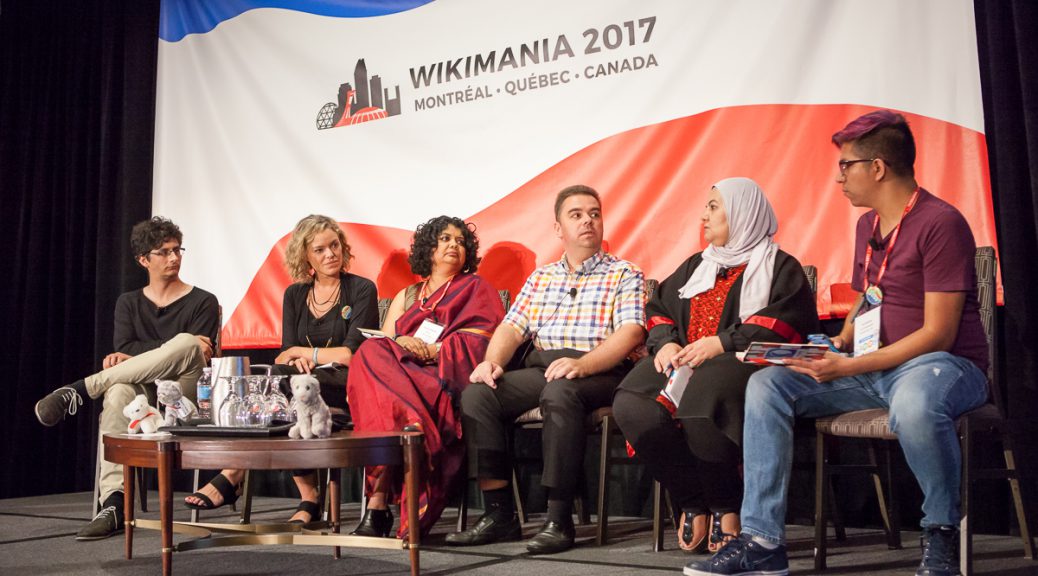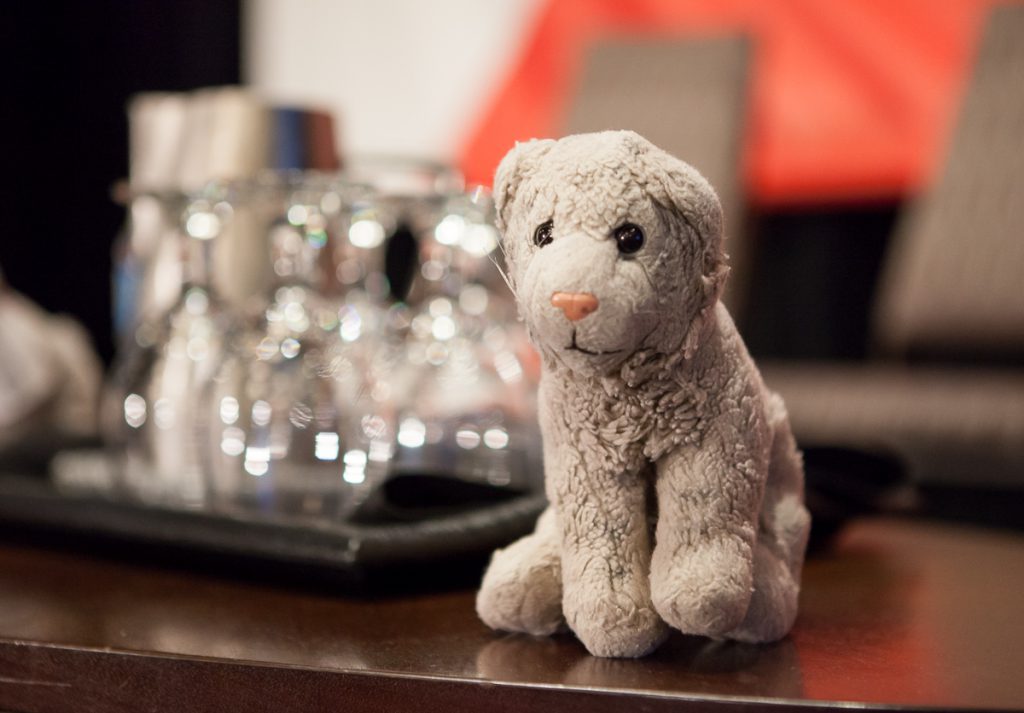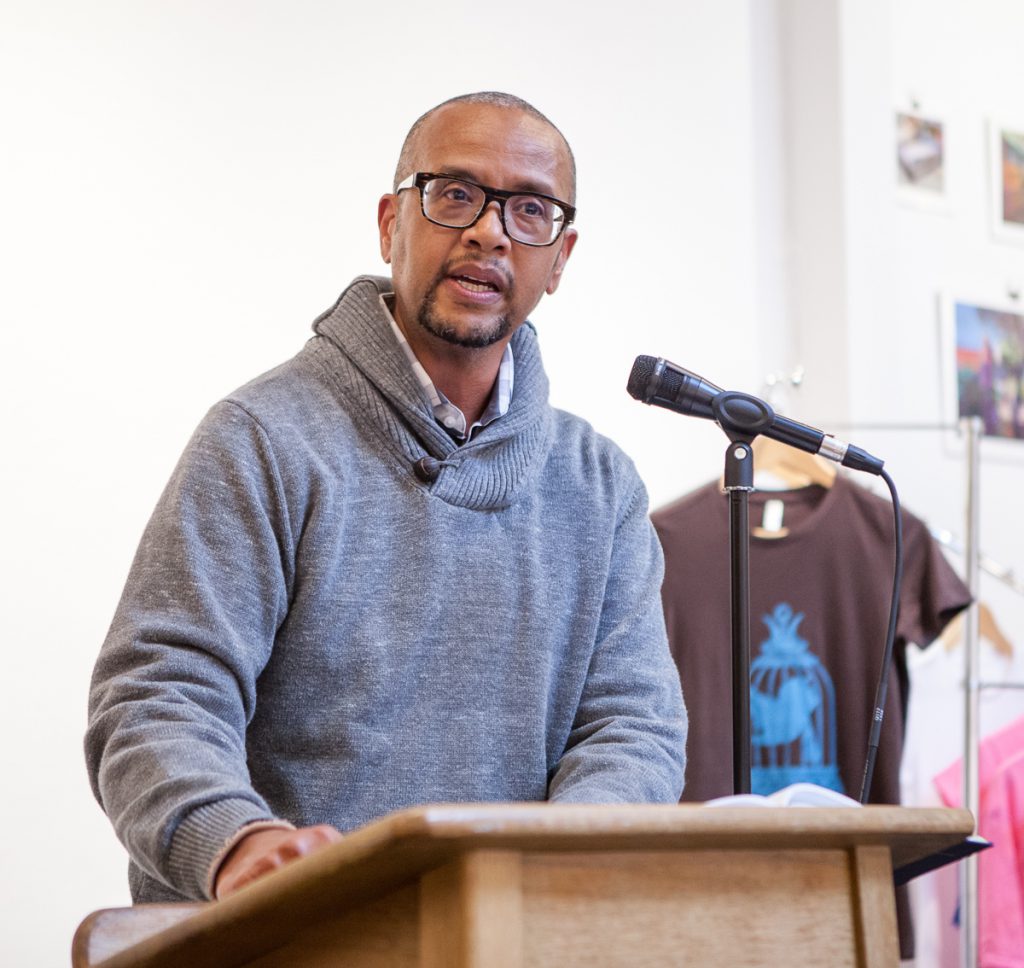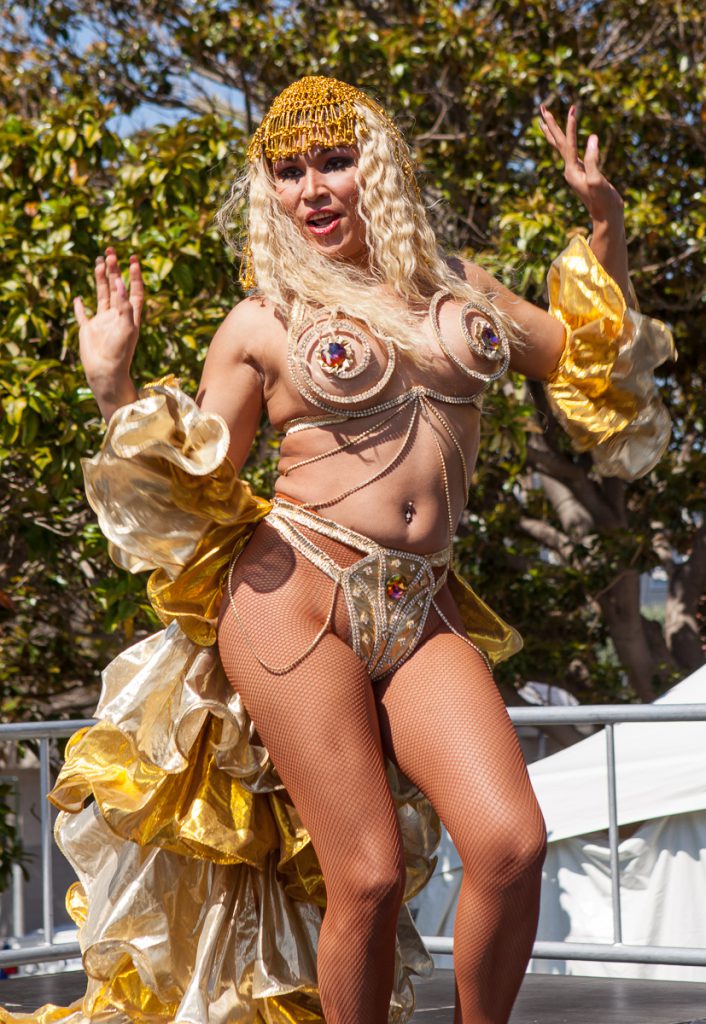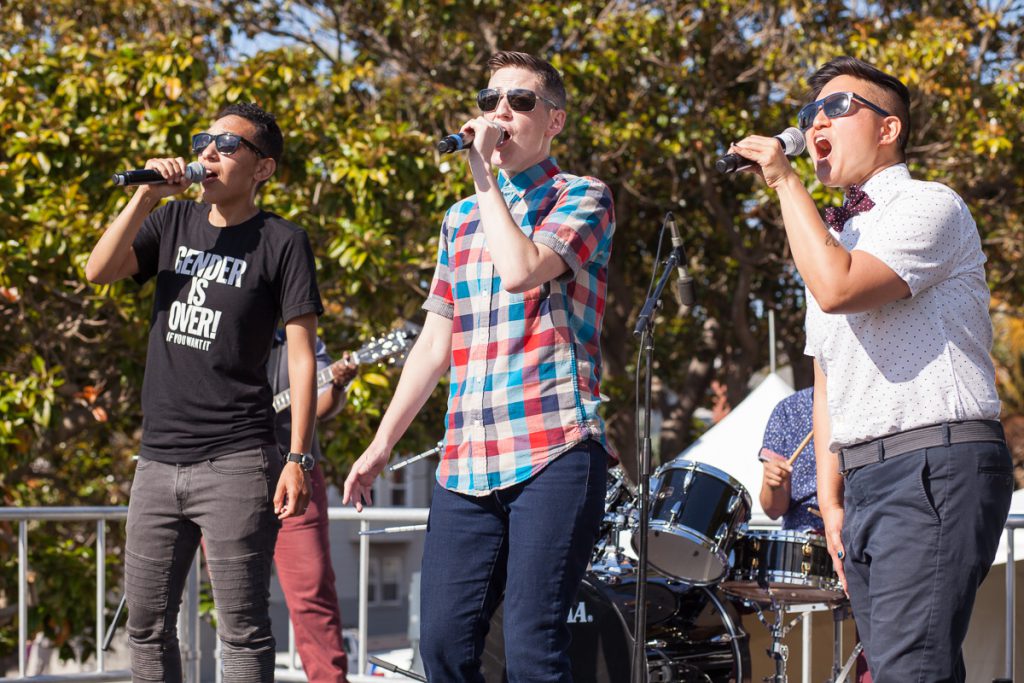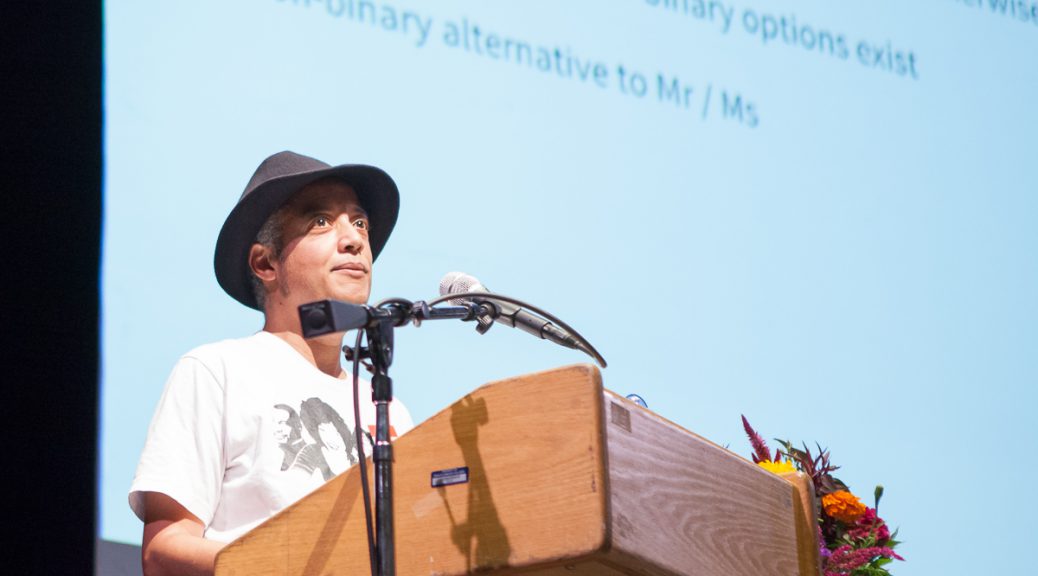[Image: Pax pets Shiva, a steer at PreetiRang Sanctuary. Photo by Ziggy.]
This week, Mercy for Animals featured me in their article, 13 LGBTQ Vegans You Need to Follow. I had already found and shared the article to my Facebook page before MFA posted it on Facebook themselves. Very shortly afterward, the negative comments came flooding in.
We had your garden-variety bigotry:
 [Image: Screenshot of a comment reading “Animal rights have nothing to do with the filth and immorality that is homosexuality, this ends my association with you.”]
[Image: Screenshot of a comment reading “Animal rights have nothing to do with the filth and immorality that is homosexuality, this ends my association with you.”]
 [Image: Screenshot of a comment reading “Vegans not have connection with sick people (LGBTQ etc.)”]
[Image: Screenshot of a comment reading “Vegans not have connection with sick people (LGBTQ etc.)”]
 [Image: Screenshot of a comment reading “Leftists glorify promiscuity, abortion, radical feminism, and welfare. Pair-bonded monogamy became edgy when leftists normalised degeneracy.”]
[Image: Screenshot of a comment reading “Leftists glorify promiscuity, abortion, radical feminism, and welfare. Pair-bonded monogamy became edgy when leftists normalised degeneracy.”]
 [Image: Screenshot of a comment reading “I am totally for mercy for animals! But against the gay pride!”]
[Image: Screenshot of a comment reading “I am totally for mercy for animals! But against the gay pride!”]
And we had your bigotry using religion as a rationale :
 [Image: Screenshot of a comment reading “Ummm No I will decide who I follow- not this- agenda- very disappointed – I run a biblical page and share your info- will NOT share this- you need to propagate your species – the first positive command, be fruitful and multiply !”]
[Image: Screenshot of a comment reading “Ummm No I will decide who I follow- not this- agenda- very disappointed – I run a biblical page and share your info- will NOT share this- you need to propagate your species – the first positive command, be fruitful and multiply !”]
 [Image: Screenshot of a comment reading “No thank you. I follow Jesus Christ!”]
[Image: Screenshot of a comment reading “No thank you. I follow Jesus Christ!”]
And we had the predictable questioning why marginalized humans should get any attention on a page devoted to animal rights:
 [Image: Screenshot of a comment reading “You know, it’s really a shame when animal groups get political. The only ones that suffer are the animals. Because of this, I am now unfriending your face book page. This message has nothing to do with animals. Also, I don’t agree with the gay agenda.”]
[Image: Screenshot of a comment reading “You know, it’s really a shame when animal groups get political. The only ones that suffer are the animals. Because of this, I am now unfriending your face book page. This message has nothing to do with animals. Also, I don’t agree with the gay agenda.”]
 [Image: Screenshot of a comment reading “Lost focus! This page should not raise politics, religion …! One should only comment on such a scandal if it involves animal welfare! This way there will be disagreements! The focus here are the animals! Try to use love and respect for animals to raise other flags is wrong it’s just the animals that will lose!”]
[Image: Screenshot of a comment reading “Lost focus! This page should not raise politics, religion …! One should only comment on such a scandal if it involves animal welfare! This way there will be disagreements! The focus here are the animals! Try to use love and respect for animals to raise other flags is wrong it’s just the animals that will lose!”]
 [Image: Screenshot of a comment reading “Why does sexual preference always get mixed into everything these days? Doesn’t this takes away from the sole purpose of this facebook cause and mission? Im fine with what ever a person’s preference is but let’s put the focus back where it needs to be. Please, let’s work together to save the ones without a voice.”]
[Image: Screenshot of a comment reading “Why does sexual preference always get mixed into everything these days? Doesn’t this takes away from the sole purpose of this facebook cause and mission? Im fine with what ever a person’s preference is but let’s put the focus back where it needs to be. Please, let’s work together to save the ones without a voice.”]
 [Image: Screenshot of a comment reading “Being gay or straight is irrelevant to having an interest in animal welfare.”]
[Image: Screenshot of a comment reading “Being gay or straight is irrelevant to having an interest in animal welfare.”]
 [Image: Screenshot of a comment reading “By this post you’ve just ruined the main purpose of the group, why so many people were following you. You better be fair now and rename the group to something like “LGBT VEGANS”, so all can understand what exactly they deal with.”]
[Image: Screenshot of a comment reading “By this post you’ve just ruined the main purpose of the group, why so many people were following you. You better be fair now and rename the group to something like “LGBT VEGANS”, so all can understand what exactly they deal with.”]
 [Image: Screenshot of a comment reading “Wtf does this have to do with mercy for animals???”]
[Image: Screenshot of a comment reading “Wtf does this have to do with mercy for animals???”]
Note that roughly half of the comments above were made within 45 minutes of the article’s posting, overwhelming any positive feedback. The moderators later removed the worst of them.
This kind of pushback is sadly familiar to those of us who are working against human oppression in the animal rights community. I’ve already addressed many of the common excuses for this behavior, including the expected replies that the above commenters aren’t “real” vegans or aren’t typical of all animal rights activists or of activists from a particular organization. This bigotry and oppression exists, period, and it’s one reason I’ve significantly decreased my involvement in animal rights and vegan activism lately. Activists who would shame me, or others, for taking care of myself need to read this response as well.
My friend Aph Ko has faced similar backlash for her work to promote black vegans, which she talks about in her new book, Aphro-ism. Helping Aph out with Black Vegans Rock is about the extent of my vegan/AR work currently. I’ve prioritized transgender advocacy and documenting the resistance to the Trump administration. Speciesism is still very bothersome to me, but fighting it is not my primary focus right now.
Allies can help by amplifying the voices of vegans in the LGBT+ community; there are many more besides those in the MFA post. Note that I have not shared my interview that was linked in that post because of concerns that some others featured on that “Queer Vegans” site are not actually vegan. I’m not splitting hairs here; the researcher intentionally included ex-vegans and ex-vegetarians in her interviews, but the title and intro do not state this explicitly. (Update, June 19: The researcher, Leah Kirts, has edited her Queer Vegans site in response to my feedback.)
Regardless, people in the LGBT+ community need help whether they’re vegan or not. Pride month should be a time to recognize and celebrate sexual and gender diversity, not just with rainbow icons and profile frames on Facebook (which are fine), but with specific acts of allyship, and financial contributions for those who have the means. Many queer writers (including me) have links to PayPal accounts, Patreon pages, or other ways you can do more than just show appreciation, but actually help us survive. Helping marginalized humans does not take away from the animals; it helps make more allies for them in the fight against all oppression.
Like this:
Like Loading...







